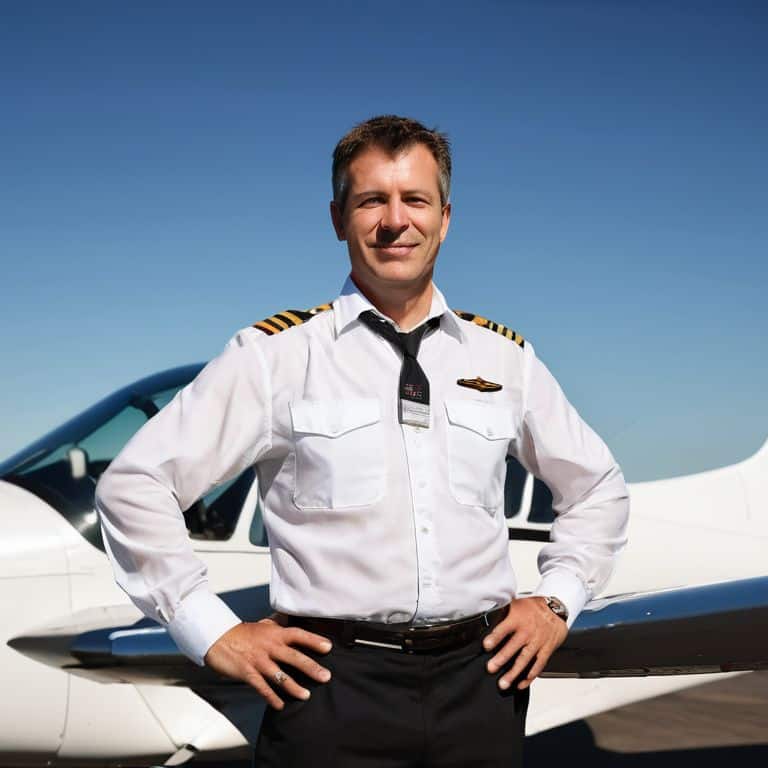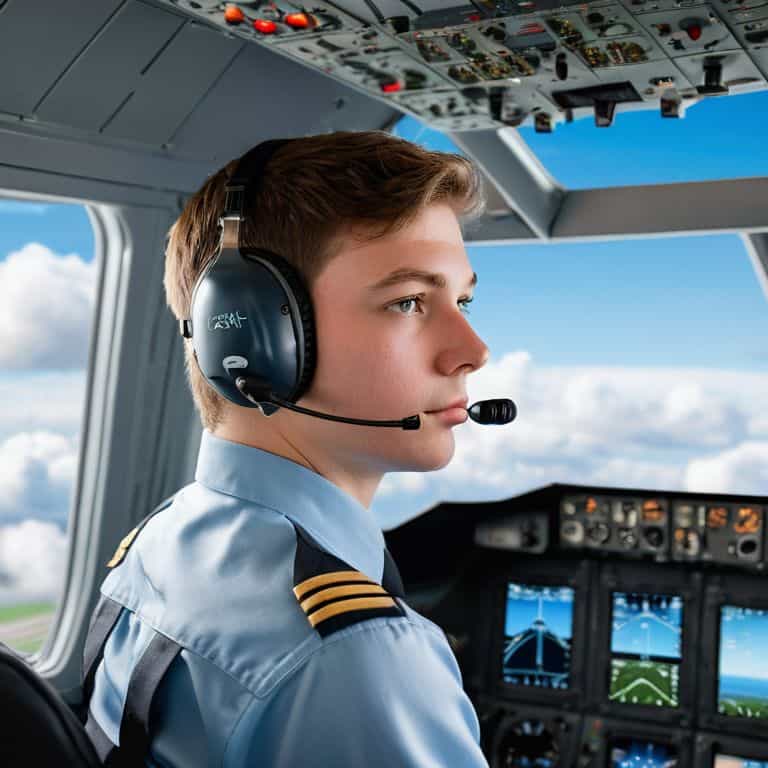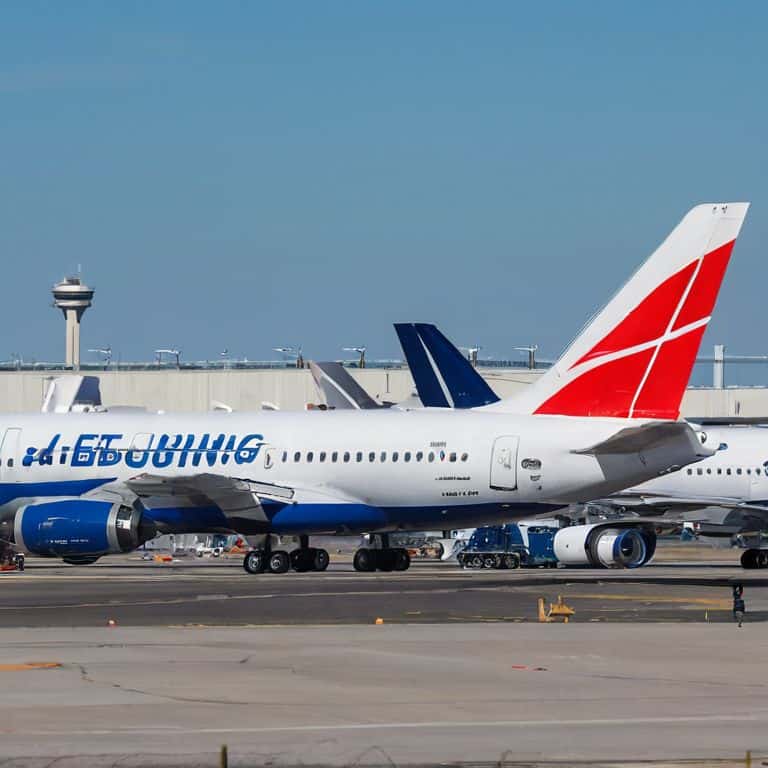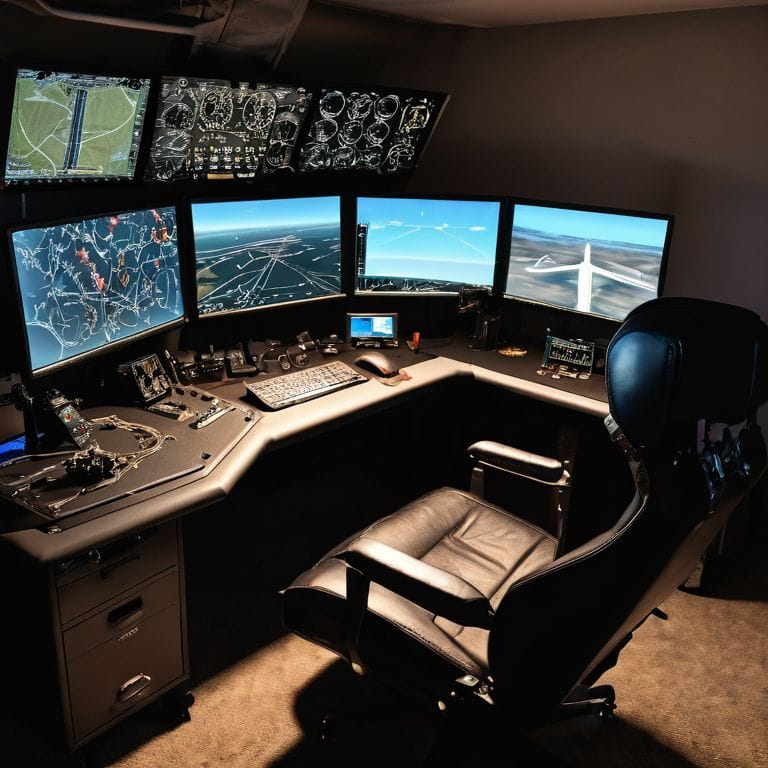As I sit in my small workshop, surrounded by half-built scale models of historic aircraft and stacks of weathered flight manuals, I often think about what it takes to become a pilot. The common myth is that it’s a daunting, expensive, and exclusive club, but I’m here to tell you that how to become a pilot is more accessible than you think. With the right mindset and guidance, anyone can learn to soar the skies. I’ve seen it time and time again as a flight instructor – students from all walks of life coming together to share a passion for flight.
In this article, I’ll share my no-nonsense approach to how to become a pilot, breaking down the complex process into simple, manageable steps. You’ll learn about the fundamentals of flight, the importance of safety and fundamentals, and the practical advice you need to get started on your journey. Whether you’re a seasoned aviation enthusiast or just starting out, I’ll provide you with the honest, straightforward guidance you need to take to the skies. So, buckle up and let’s get started on this exciting adventure together, as we explore the ins and outs of how to become a pilot.
Table of Contents
Guide Overview: What You'll Need
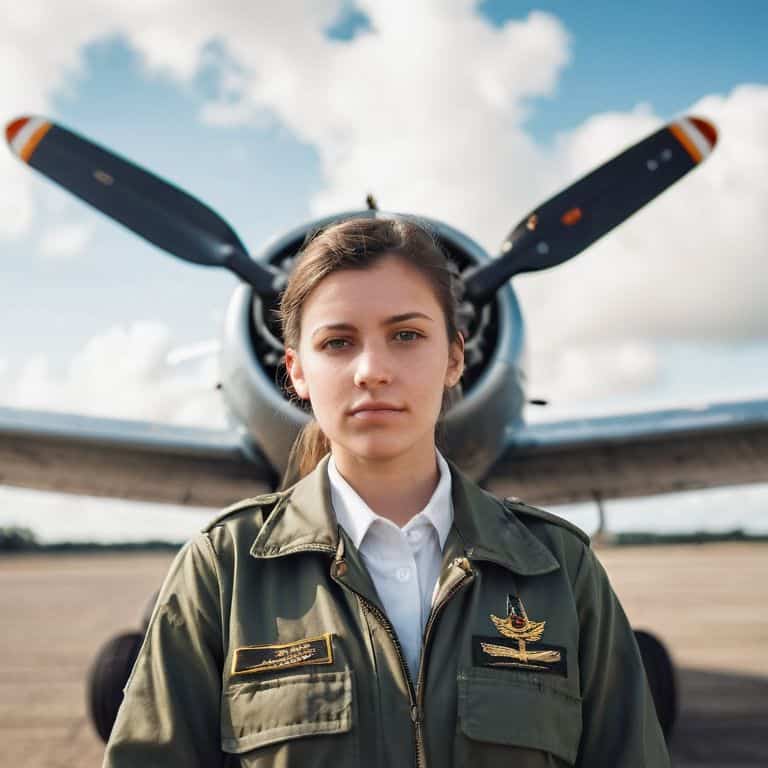
Total Time: 1 year – 2 years
Estimated Cost: $5,000 – $10,000
Difficulty Level: Hard
Tools Required
- Flight Simulator Software (for practice and training)
- Aviation Headset (for clear communication)
- Flight Bag (for organizing materials)
Supplies & Materials
- Pilot’s Logbook (for tracking flight hours)
- Aeronautical Charts (for navigation)
- FAA Study Materials (for exam preparation)
Step-by-Step Instructions
- 1. First, let’s get started with the basics: to become a pilot, you’ll need to meet the eligibility criteria set by the Federal Aviation Administration (FAA), which includes being at least 17 years old, being able to read, speak, write, and understand English, and holding a valid U.S. driver’s license. It’s essential to review these requirements carefully to ensure you’re on the right track from the beginning.
- 2. Next, you’ll need to obtain a medical certificate from a FAA-designated Aviation Medical Examiner (AME), which will assess your physical and mental fitness to fly. This is a crucial step, as it ensures you’re healthy enough to safely operate an aircraft. Don’t worry, it’s a standard procedure, and your AME will guide you through the process.
- 3. Now, it’s time to choose a flight school that’s right for you. With so many options available, it’s essential to do your research and find a school that’s certified by the FAA and has a good reputation. Consider factors like location, cost, and the type of aircraft they use for training. I always tell my students to visit the school in person to get a feel for the facilities and meet the instructors.
- 4. Once you’ve selected a flight school, you’ll need to enroll in a flight training program, which will teach you the fundamentals of flying. This typically includes both ground school and flight training, and you can expect to cover topics like aircraft systems, weather, navigation, and regulations. As your instructor, I’ll be with you every step of the way to ensure you understand each concept thoroughly.
- 5. As you progress through your training, you’ll need to log a minimum number of flight hours, which will give you the hands-on experience you need to become a confident pilot. This includes a combination of solo flights, cross-country flights, and night flights, all of which will help you develop the skills and instincts necessary to navigate different conditions. Remember, practice makes perfect, so be sure to take advantage of every opportunity to get in the air.
- 6. In addition to your flight training, you’ll also need to study for the FAA written exam, which will test your knowledge of aviation concepts, regulations, and safety procedures. Don’t worry, it’s not as daunting as it sounds – with a good study guide and some dedication, you’ll be well-prepared to ace the exam. I always recommend creating a study schedule to help you stay on track and ensure you’re covering all the necessary material.
- 7. After you’ve completed your flight training and passed the written exam, you’ll be ready to take the practical test, also known as a checkride. This is your chance to demonstrate your flying skills to a FAA inspector, and it’s the final step towards earning your pilot’s license. Remember to stay calm and focused, and trust in the training you’ve received – you’ve got this!
How to Become a Pilot
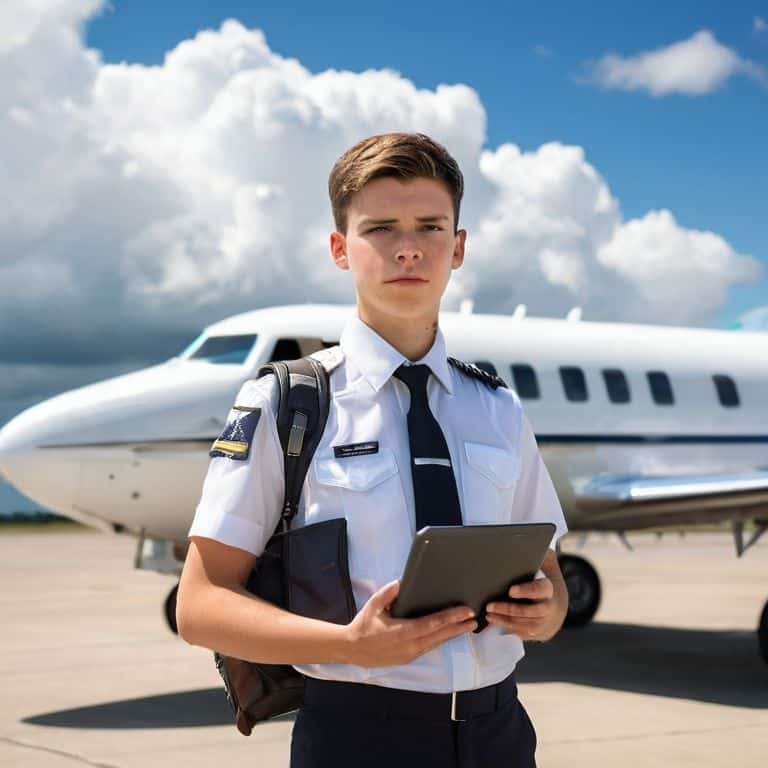
As you embark on this journey, it’s essential to consider the commercial pilot training programs available to you. These programs will provide you with the necessary skills and knowledge to succeed in the aviation industry. I always tell my students to think of it like navigating through a storm – you need to be prepared and have the right tools to make it through safely.
One of the most significant advantages of these programs is the use of flight simulator benefits, which allow you to practice and hone your skills in a realistic and safe environment. This is especially important when it comes to learning how to handle emergency situations, as it can be a matter of life and death. By practicing in a simulator, you can build your confidence and reaction time, which will serve you well in your future career as a pilot.
In addition to formal training, it’s crucial to stay on top of the pilot medical certificate requirements and instrument rating training. This will not only ensure that you’re fit to fly but also give you the skills you need to navigate through challenging weather conditions. Remember, becoming a pilot is not just about passing a test – it’s about developing a mindset and a set of skills that will serve you well throughout your career.
Mastering Commercial Pilot Training
Mastering commercial pilot training requires a significant amount of dedication and hard work. As a certified flight instructor, I’ve seen many students struggle to grasp the complex concepts, but with a clear understanding of the fundamentals, anyone can succeed. It’s like navigating through turbulence – you need to know how to read the signs and adjust your course accordingly. In commercial pilot training, you’ll learn about aircraft performance, weather, and navigation, all of which are crucial for safe and efficient flight.
To master commercial pilot training, focus on building a strong foundation in these areas. Break down each topic into manageable chunks, and practice, practice, practice. Remember, flying is not just about operating the aircraft, it’s about understanding the environment and making informed decisions. With patience and persistence, you’ll be well on your way to earning your commercial pilot’s license and taking your flying skills to the next level.
Unlocking Aviation Career Paths
As a pilot, you’ll have numerous career paths to explore. From flying for major airlines to working as a bush pilot, the options are vast. You could also consider becoming a flight instructor, like myself, and share your passion for flying with others. With a commercial pilot’s license, you’ll have the foundation to pursue a variety of roles within the aviation industry.
Some pilots even venture into specialized fields like aerial photography, cargo transport, or medical evacuation. The key is to identify your interests and strengths, and then tailor your training and experience to match. By doing so, you’ll unlock a world of opportunities and create a fulfilling career in aviation.
5 Essential Tips to Soar Through Your Pilot Training
- Start by building a strong foundation in the fundamentals of flight, just like I do when I’m constructing a detailed scale model of a historic aircraft
- Find a flight instructor who’s a good fit for your learning style, and don’t be afraid to ask questions – I’ve seen many students thrive with the right guidance
- Practice, practice, practice – the more hours you log in the air, the more comfortable you’ll become with the ins and outs of flying, just like how I feel when I’m hiking in the backcountry
- Stay organized and focused by using checklists and simple diagrams to help you understand complex concepts, a technique that has helped my students and me alike
- Remember that becoming a pilot takes time, patience, and dedication – don’t get discouraged by setbacks, and always keep your eyes on the horizon, just as I do when I’m studying the weather patterns
Key Takeaways to Soar the Skies
Becoming a pilot requires a deep understanding of aviation fundamentals, a strong commitment to safety, and a passion for continuous learning
Mastering commercial pilot training involves not just accumulating flight hours, but also developing a keen sense of situational awareness and decision-making skills
Unlocking various aviation career paths, from bush flying to airline piloting, depends on building a strong foundation in the principles of flight, aircraft systems, and weather, which can be applied to succeed in any flying profession
Soaring to New Heights
Becoming a pilot isn’t just about mastering the controls, it’s about understanding the journey – every takeoff, every turbulence, and every landing is a lesson in perseverance, trust, and the thrill of discovery.
Daniel Sato
Reaching New Heights: A Pilot's Journey
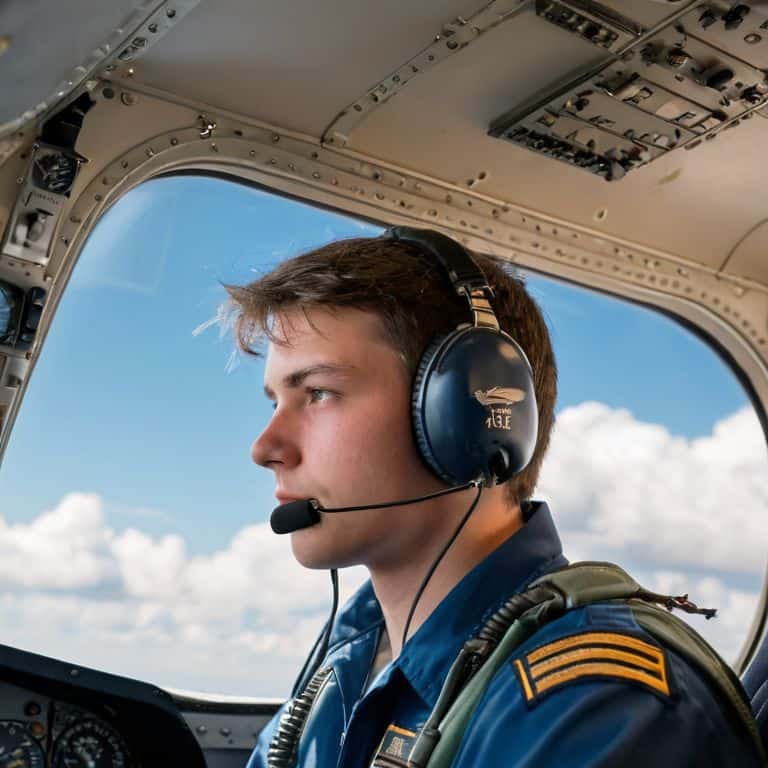
As we conclude our journey on how to become a pilot, let’s summarize the key points: obtaining a commercial pilot license requires dedication, persistence, and a passion for flying. We’ve covered the fundamentals of flight training, from mastering commercial pilot training to unlocking various aviation career paths. It’s essential to remember that becoming a pilot is not just about completing a series of checks and balances, but about developing a deep understanding of the principles of flight and a strong foundation in safety protocols.
As you embark on your own journey to become a pilot, remember that the sky is truly the limit. With hard work and determination, you can soar to new heights and make your dreams a reality. Don’t be afraid to take the leap and pursue your passion for flying – with the right mindset and training, you’ll be well on your way to a successful and rewarding career in aviation. Keep in mind that learning to fly is a lifelong journey, and it’s essential to stay curious, keep learning, and always be open to new experiences and challenges.
Frequently Asked Questions
What are the basic requirements to enroll in a commercial pilot training program?
To enroll in a commercial pilot training program, you’ll typically need to be at least 18 years old, hold a high school diploma, and possess a valid private pilot’s license. You’ll also need to pass a medical exam and meet the program’s specific requirements, which may include a background check and English proficiency test.
How do I choose the right flight school for my needs and budget?
Choosing the right flight school is like plotting a course – you need to consider your destination and budget. Look for schools with experienced instructors, a safe and well-maintained fleet, and a curriculum that fits your goals and wallet. I recommend making a checklist to compare schools and asking plenty of questions before making your decision.
What kind of financial aid or scholarships are available to help fund my pilot training?
Don’t let finances ground your dreams. There are several scholarships and financial aid options available, such as the Federal Aviation Administration’s (FAA) scholarship program and the Aircraft Owners and Pilots Association (AOPA) Foundation’s scholarship fund. I recommend exploring these and other options to help fund your pilot training.
